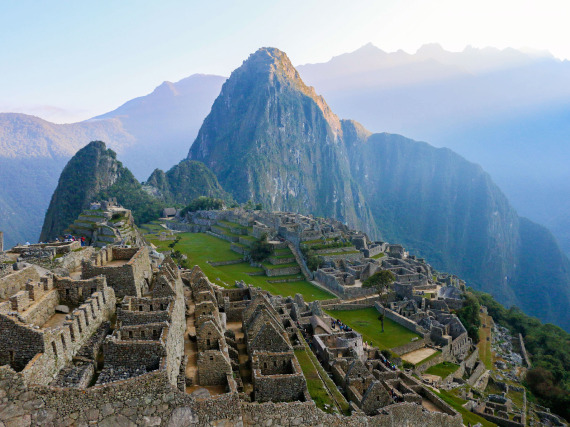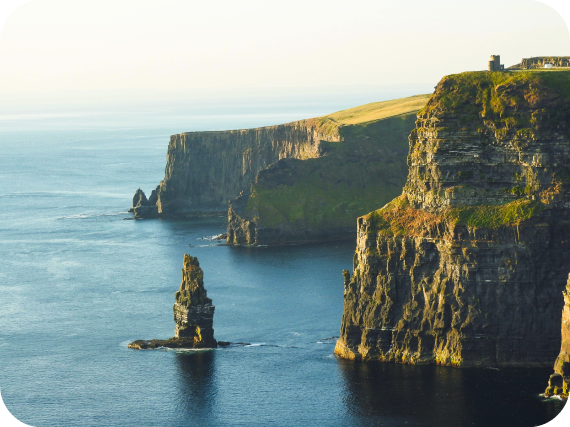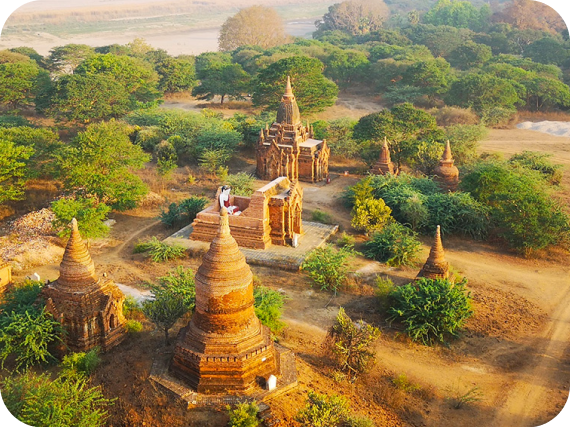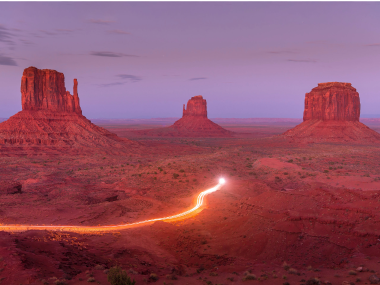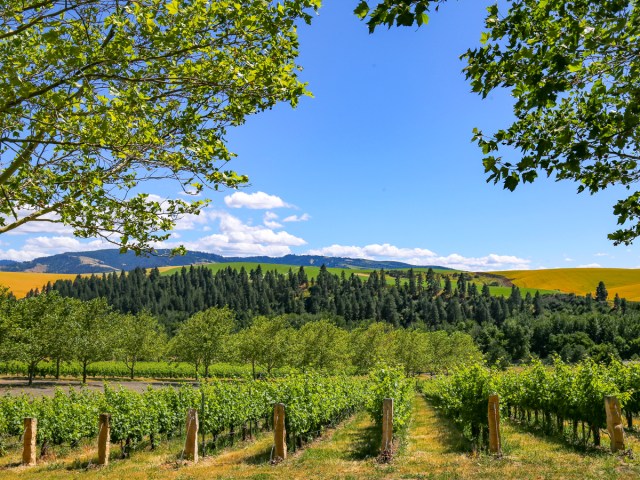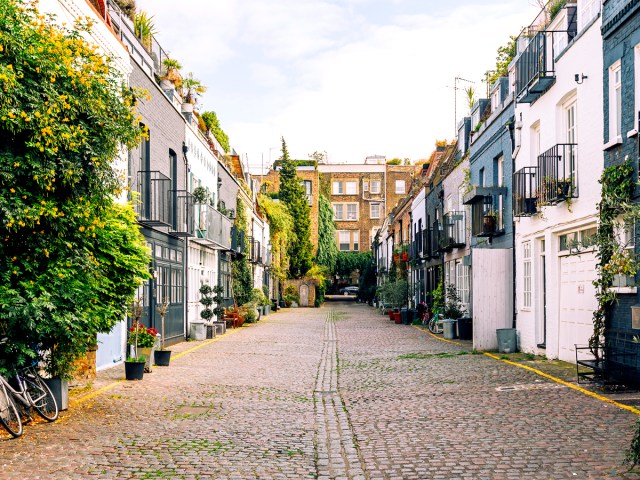The world’s most famous natural wonders — the likes of the Grand Canyon, the Great Barrier Reef, and Yellowstone National Park — all draw millions of visitors each year. But those destinations only scratch the surface of the planet’s most fascinating natural attractions. From a bioluminescent sea in the Maldives to a rainbow river in Colombia, discover nine of our favorite lesser-known natural wonders around the world.
Waitomo Caves – New Zealand
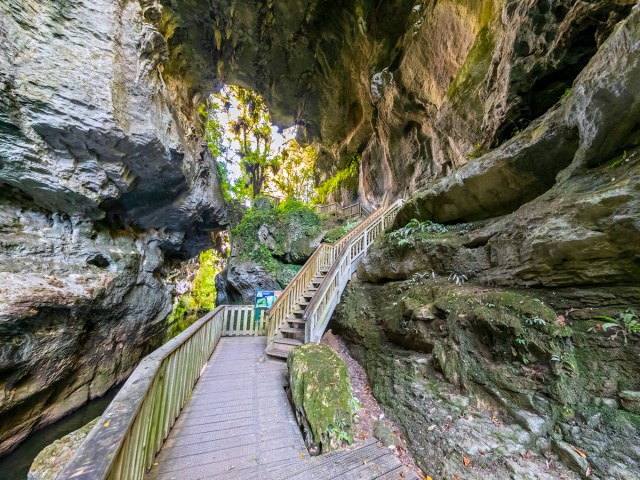
One of the most sublime natural wonders on New Zealand’s North Island has an unassuming star: the tiny, yet mighty glowworm. At the Waitomo Caves, thousands of these insects dangle by their silken threads from the cave ceilings, their namesake glow — a distinctive bluish-green hue — illuminating the subterranean roofs like a starry night sky. The glow of these insects serves to attract prey for food, but to visitors, the luminescence creates an atmosphere reminiscent of a fairy tale.
The worms, which are actually a species of fungus gnat called Arachnocampa luminosa, are endemic to the island country. The caves the glowworms dwell in are no less spectacular than the insects themselves, formed from limestone that dates back some 30 million years. Visitors can traverse an intricate system of footpaths through this underground world or quietly float beneath the glowworms in rope-led boats — either is an unforgettable experience, and one you can’t find anywhere else but in New Zealand.
Wadi Rum – Jordan
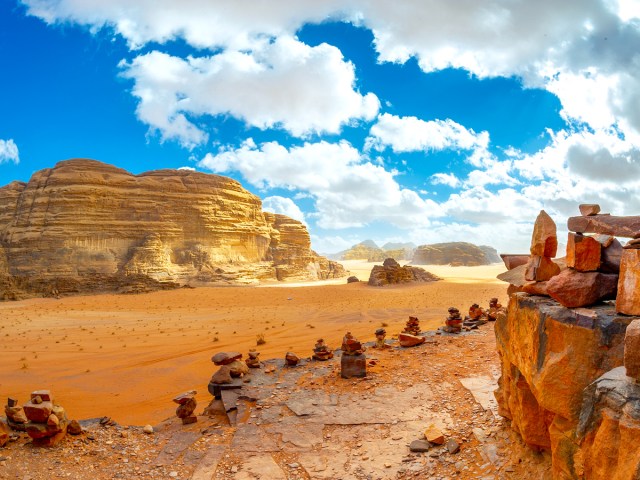
It’s easy to see why Wadi Rum — a fantastical desert valley in southern Jordan, near the Saudi Arabia border and the Red Sea — is also known as the Valley of the Moon. The landscape of nearly vertical red sandstone gorges, natural sandstone arches, and massive caverns is thrillingly disorienting and could easily be mistaken for an alien planet. Hollywood directors have noticed, too, using the valley as an otherworldly stand-in for films such as Dune, Prometheus, and The Martian. But Wadi Rum’s most famous starring role was as itself, in the 1962 classic film Lawrence of Arabia, a movie that put Jordan’s tourism industry on the map.
In 2011, UNESCO declared Wadi Rum (which translates to “dry valley”) a World Heritage Site, not just for the spectacular scenery but also for the region’s human history, which dates back up to 12,000 years. There are an estimated 25,000 petroglyphs throughout the valley — gorgeous rock art that provides a fascinating glimpse into the lives of Wadi Rum’s earliest inhabitants.
Colca Canyon – Peru
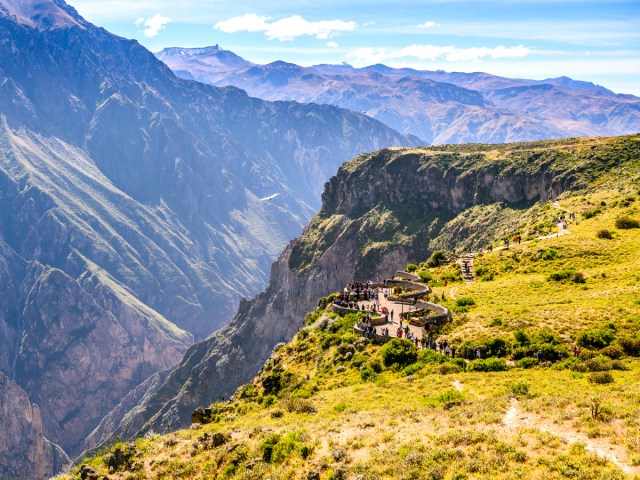
High in the Andes Mountains of southern Peru lies one of the planet’s deepest canyons, a chasm that — at its lowest point — cuts approximately 11,155 feet into the earth. Nearly twice as deep as the Grand Canyon, the spectacular Colca Canyon extends for more than 62 miles, filled with wonders both natural and human-made. The sloping landscape is famous for Andean condors, whose wingspan can stretch up to 10 feet, but it’s also home to at least a dozen Indigenous settlements, including the Chivay and Yanque peoples. The wititi, an elaborate costumed love dance from the Yanque culture, originated in the region and is listed on UNESCO’s list of Intangible Cultural Heritage of Humanity.
Expectedly, Colca Canyon offers visitors many opportunities to work up a sweat, including rafting, kayaking, biking, hiking, or even zip-lining between the canyon walls. But for those more inclined toward relaxation, the canyon’s proximity to dozens of volcanoes has created a number of thermal baths that are open to the public. All of this is accessible via a bus ride from Machu Picchu, allowing visitors to combine two of Peru’s most epic sights in one journey.
Shilin Stone Forest – China
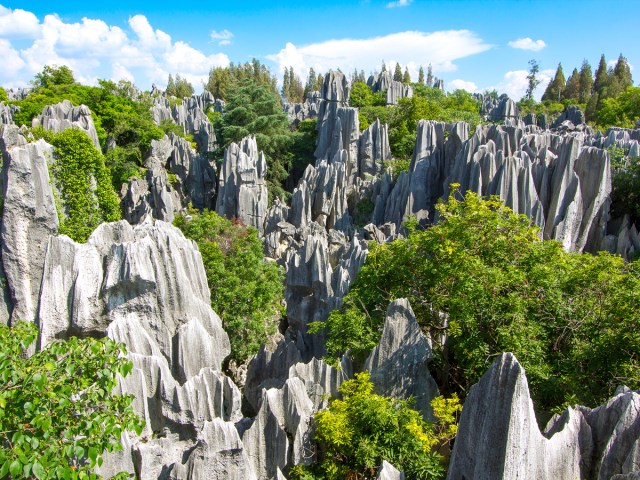
Some 270 million years ago, this stretch of western China’s Yunna province was a shallow sea, but today a beguiling limestone labyrinth rises in its place. Shilin (which actually means “stone forest”) is one of the world’s only examples of this unique karst topography, where the forces of erosion have slowly (over millennia) created a rocky fairyland of towering tree-like spires and mushroom-shaped stones.
Part of the South China Karst UNESCO World Heritage Site, the enchanting “forest” covers almost 200 square miles. In addition to the surreal limestone towers, Shilin contains caves, an underground river, waterfalls, and lakes, including one with a small island at its center. And don’t leave without visiting the famous Ashima Stone: According to a local legend among the Sani people, it was created when a beautiful girl named Ashima was turned to stone after drowning in a flood that was caused by a rejected suitor.
Tunnel of Love – Ukraine
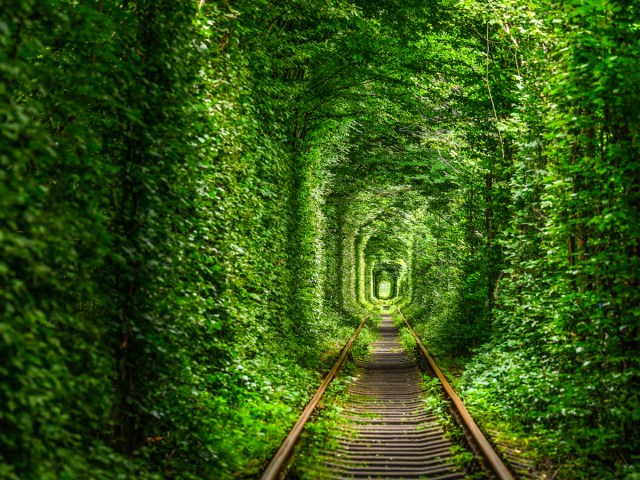
Just outside the city of Klevan in western Ukraine, a private train transports lumber to a factory that produces sheets of plywood. That doesn’t sound particularly like a natural wonder, but a 4-mile stretch of the track is lined with closely spaced trees, their branches mingling overhead to form a beautiful leafy arch plucked straight out of a fairy tale. Although the trees were planted during the Cold War to obscure the visibility of a Soviet-era military installation, the resulting “tunnel” has become a popular spot for tourists around the world, and particularly for sweethearts — legend has it that lovers strolling underneath will be granted a wish, and the intimate scene also makes it a popular place for proposals.
If you want to walk along the tunnel yourself, it’s only a short stroll from the center of Klevan. (Or catch a marshrutka, one of the small buses that are ubiquitous in Ukraine, from nearby Rivne or Lutsk.) The leaves are at their brightest in spring and summer, but fall colors prove equally as magical. Just be sure to keep a sharp eye out for the train — this is a working railway, after all.
Chocolate Hills – The Philippines
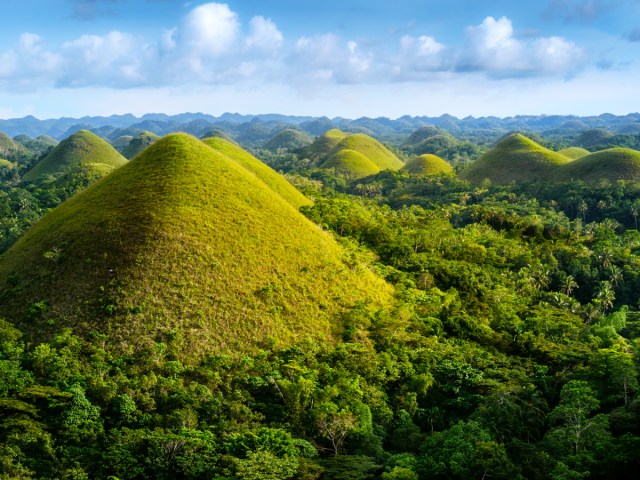
Though they sound like something out of Willy Wonka, the Chocolate Hills of the Philippines’ Bohol province won’t satisfy your sweet tooth. They may take your breath away, though. This collection of more than 1,200 small, conical brown hills takes its name from the brown grass covering the peaks in the dry season. But while the 20-square-mile landscape filled with these geological oddities is surely mesmerizing, geologists still aren’t sure exactly how they came to be in the first place.
One (plausible) theory is that the conical hills resulted from thousands of years of marine limestone buildup over hardened clay, giving them their unique shape. Local lore has also attempted to fill in the gaps — one origin story tells of a giant named Arogo who was in love with Aloya, a mortal woman. When Aloya died, Arogo was heartbroken and couldn’t stop crying, and his tears formed the hills. One thing that’s for certain: For some of the best vistas, head to Carmen or Sagbayan (both of which have resorts with viewing platforms) in late afternoon, and watch the sun setting over the chocolatey mounds as far as the eye can see.
Caño Cristales – Colombia
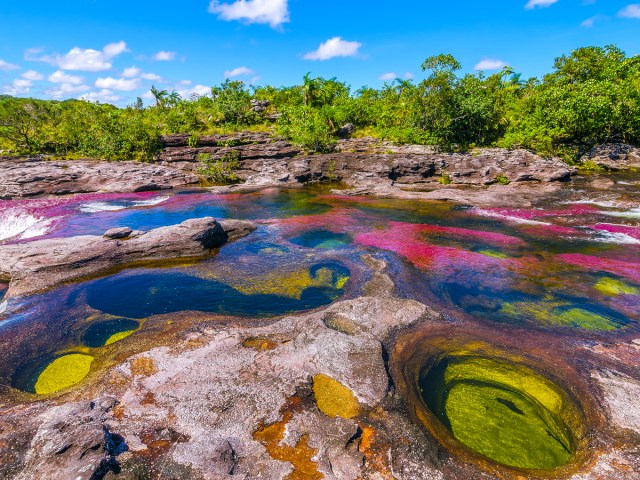
For much of the year, this 62-mile-long river located about 175 miles south of Bogotá wouldn’t be worth going out of your way for. But in-the-know travelers who make the trek between July and November will witness Colombia’s “Liquid Rainbow” — a natural phenomenon found nowhere else on the planet. During these months, the otherwise unassuming river explodes into an array of psychedelic colors, all thanks to a blooming river weed called Macarenia clavigera.
Part of the Sierra de La Macarena National Natural Park — tucked into a stunning mountain range near the Andes — the fast-moving river and its falls have carved pits into the rocks along its bed over time, creating a perfect environment for the Macarenia clavigera to thrive. The plant mostly blooms in deep reds, maroons, and pinks, but where there’s shade over the water, the blooms grow bright green and yellow and sometimes even blue — giving the river its nickname, the “River of Five Colors.” But some onlookers, putting it even more simply, have dubbed it the “most beautiful river on Earth.”
Sete Cidades Lake – Portugal
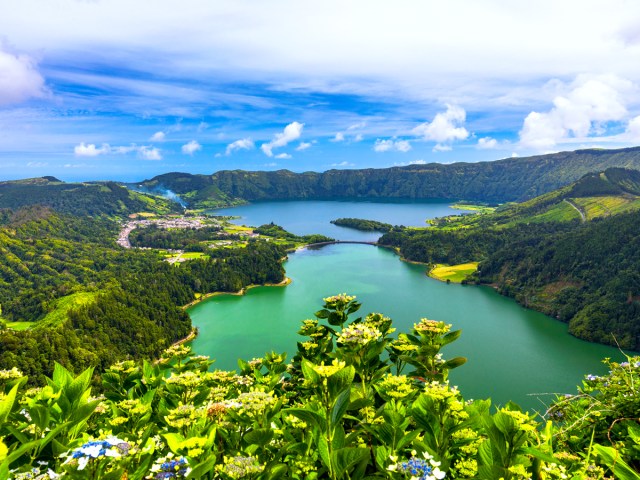
The average American traveler might be hard-pressed to pinpoint the Azores on a map, but the fact that this chain of volcanic islands remains relatively untouristed (by European standards, at least) is a big part of their allure. Belonging to Portugal and located about 800 miles off the country’s Atlantic coast, the Azores sit at the meeting point of the African, American, and European tectonic plates — a marriage that is responsible for the islands’ dramatic landscapes filled with natural volcanic wonders, from mud pots to fumaroles and caves.
One of these wonders you may at least recognize from postcards: Sete Cidades Lake. Roughly 3 miles wide and surrounded by bright-green forest, Sete Cidades is actually a twin lake that fills two sides of an extinct volcanic cauldron on São Miguel Island, separated by a narrow strait. Remarkably, the lakes are different colors — one bluish, one greener — due to the different algae found in each. (According to local legend, one lake formed from the tears of a shepherd and the other from a princess with whom he shared a forbidden love.) To get the best view, hike up to the aptly named Vista do Rei lookout, which translates to “King’s View.”
Sea of Stars – The Maldives
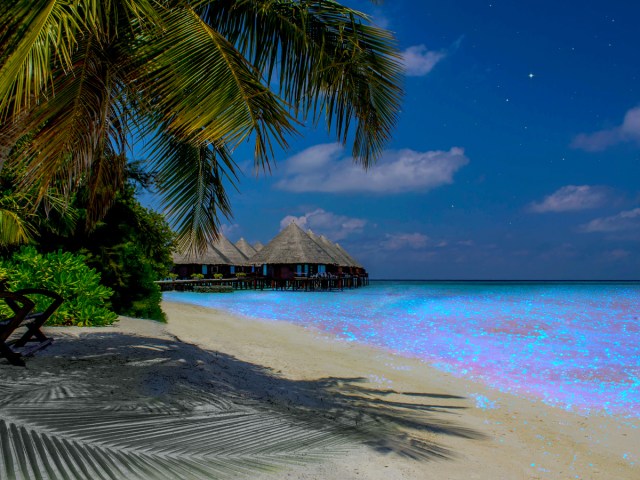
A dazzling aquatic light show transforms the surf of Mudhdhoo Island in the Maldives into a “Sea of Stars,” much like the night sky above. Although it looks like a path strewn with countless blue Day-Glo beads, no mermaid’s jewel box has washed ashore here — the light source is thanks to firefly-like ostracod crustaceans, some as small as sesame seeds. When these tiny creatures react with oxygen, they emit beams for up to minutes at a time, a protective process known as bioluminescence that is meant to scare off marine predators.
While bioluminescent ostracods surface in various locales, including the Caribbean, rarely are they as conspicuous as on Mudhdhoo Island, one of the nearly 1,200 coral islands that make up this Indian Ocean archipelago. Part of the Baa Atoll, the island is accessible via a 15-minute speedboat ride from the Maldives’ capital, Malé. Some of the island’s local residents advise visiting when a new moon brings saturated darkness and you can tiptoe through the magical tide.
More from our network
Daily Passport is part of Inbox Studio, which publishes content that uplifts, informs, and inspires.

